
Species status: accepted; Greeff 1884
The validity of the species as an independent species is still in question as no further research beyond Greeff exists regarding C. rubescens. We are including this page to acknowledge that this species may in fact exist. Limited photos found of Coenobita from this region are obviously different from other known species.
Common name:
Latin Origins: rubescere=blushing, ruber=red
Distribution: West Africa, Sao Tome, Equatorial Guinea, Gulf of Biafra, Bioko Island
Habitat: Occurs far inland to elevations exceeding 800 M. [1]
Ecology:
Characteristics:
Body mass 48g [1]
Common identifiers:
Eyes – elongated, eye stalks seem to match body color
Large claw – no stitch marks, dark patch
Coloring – brown to dark brick red or even black
Known to Chirp – unknown
Behavior:
Diet: Coenobita species are omnivorous scavengers
C. Rubescens Preferred shells:
Will exchange its marine shells for terrestrial ones, and is found in shells that do no occur below 800m. Has been noted to wear sea urchin tests (outer skeleton) to cover abdomen (Rathbun 1900) [1]


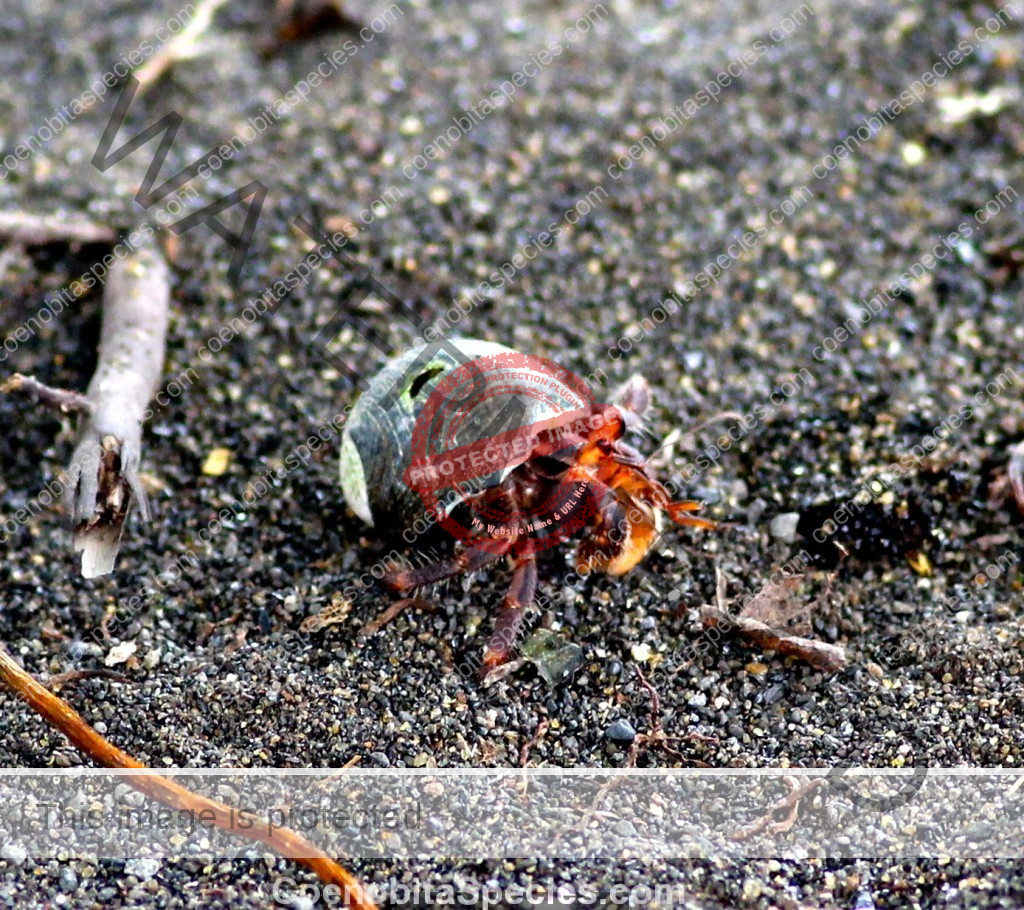
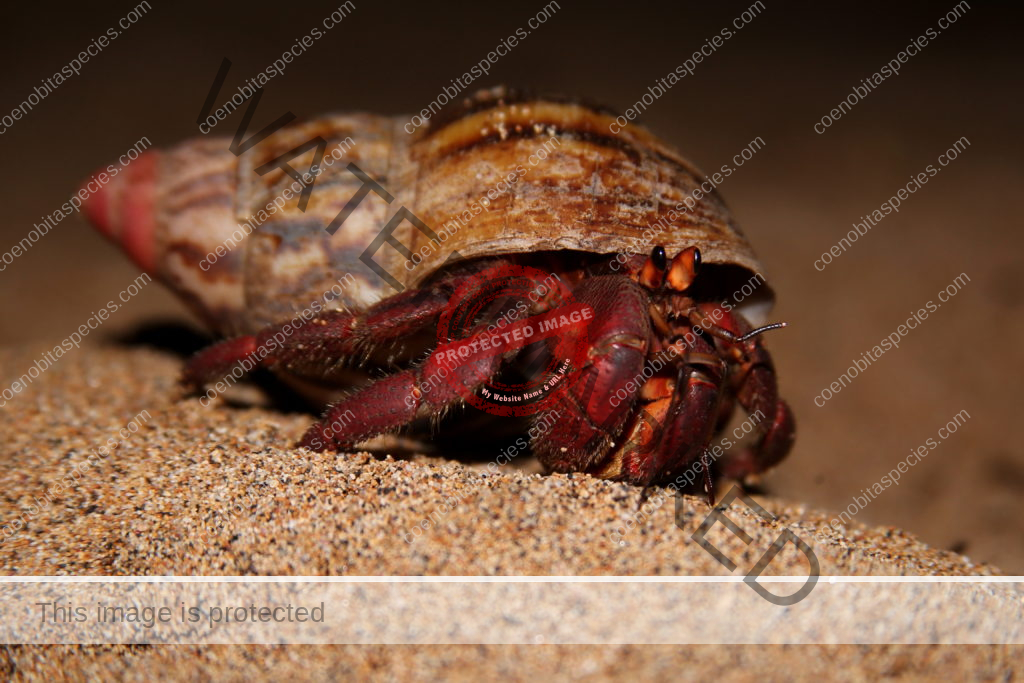
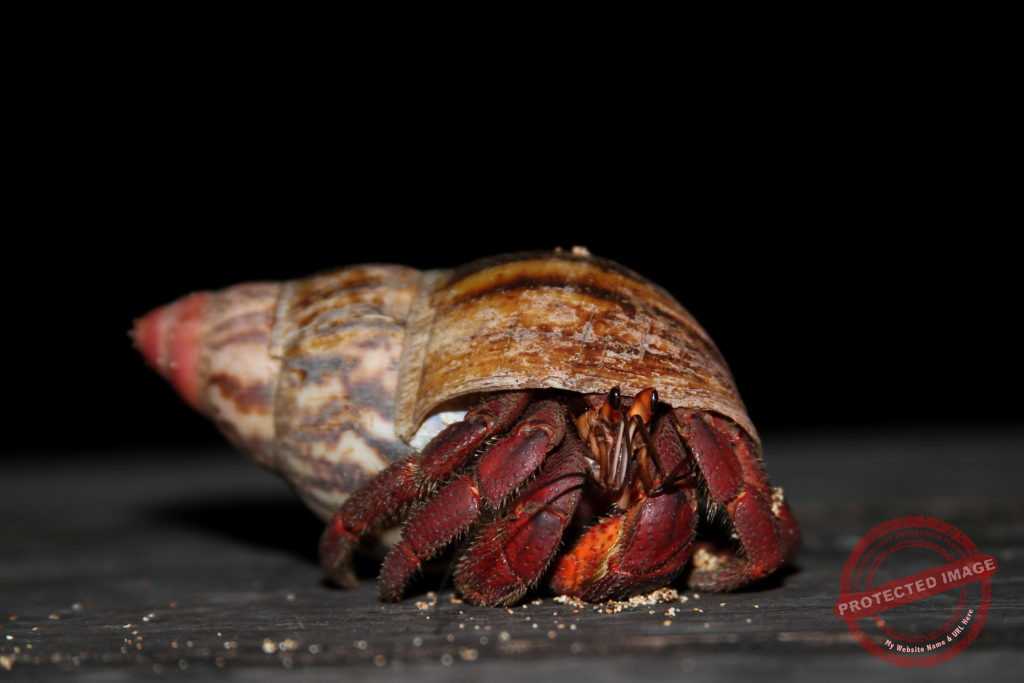


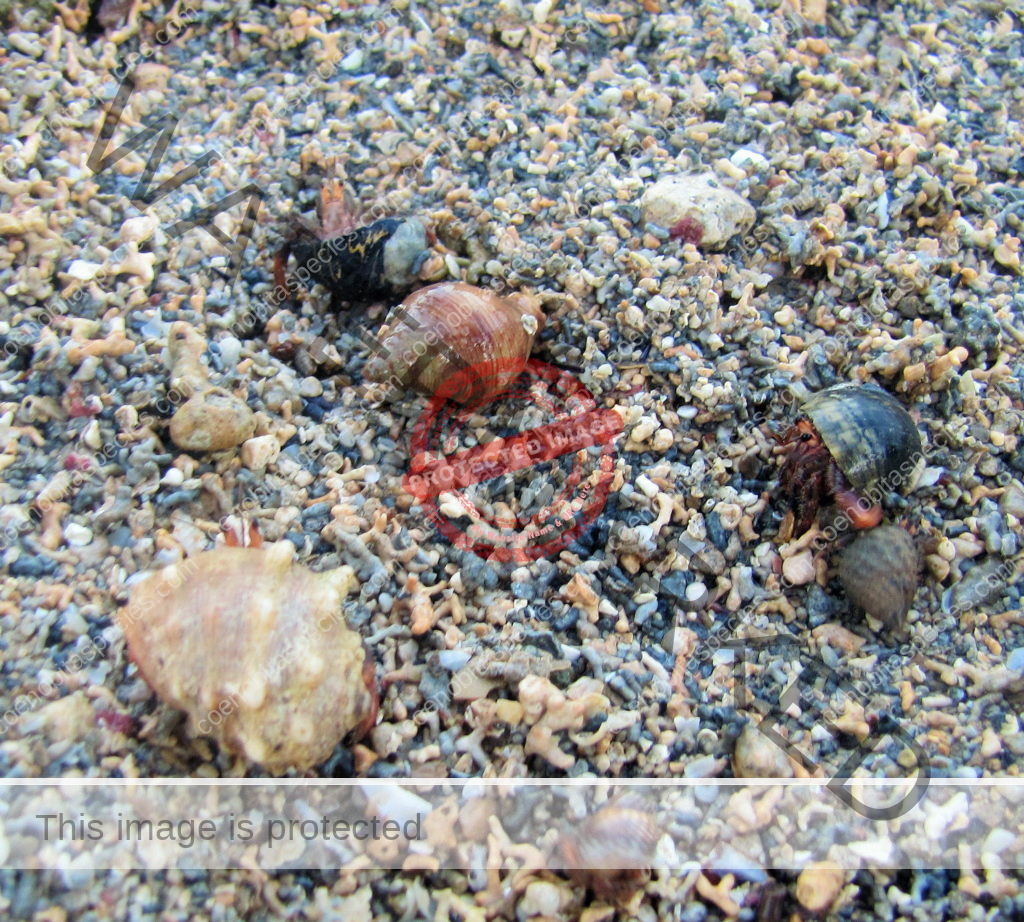
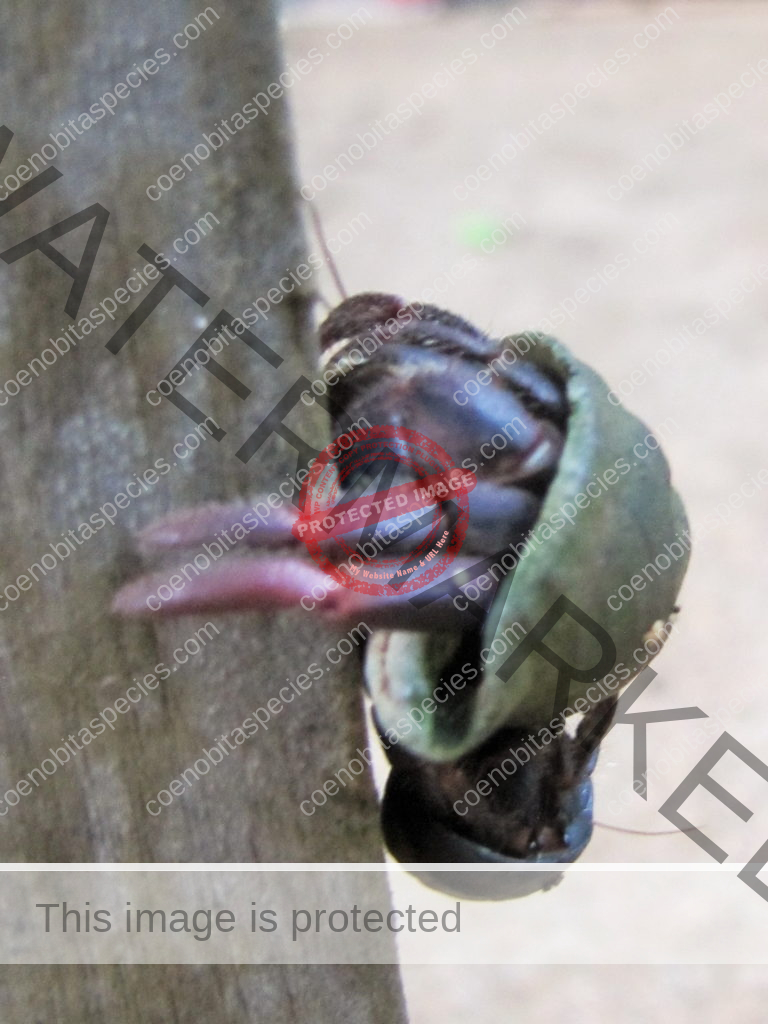


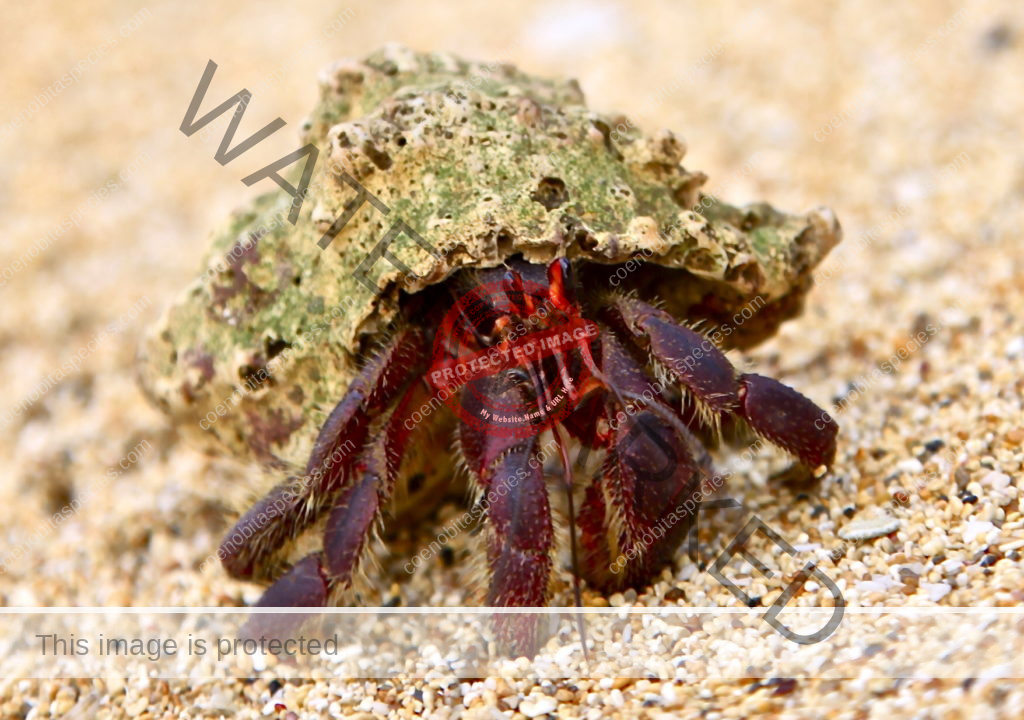
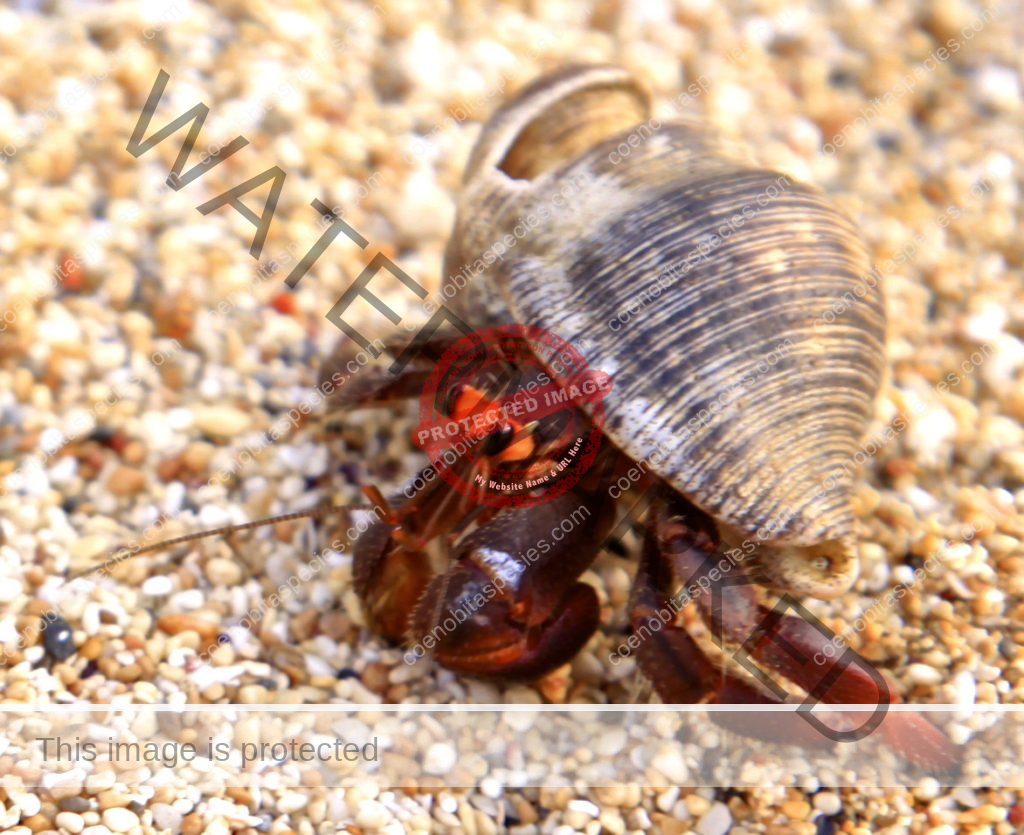

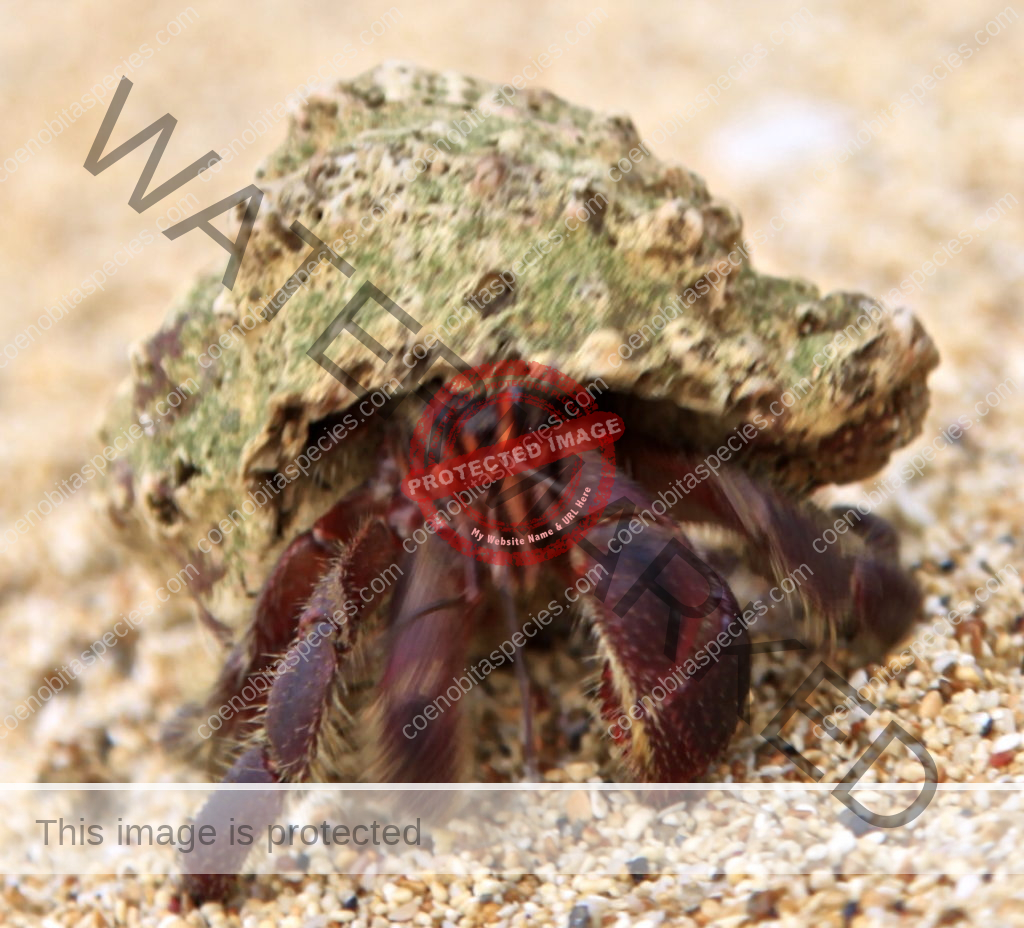

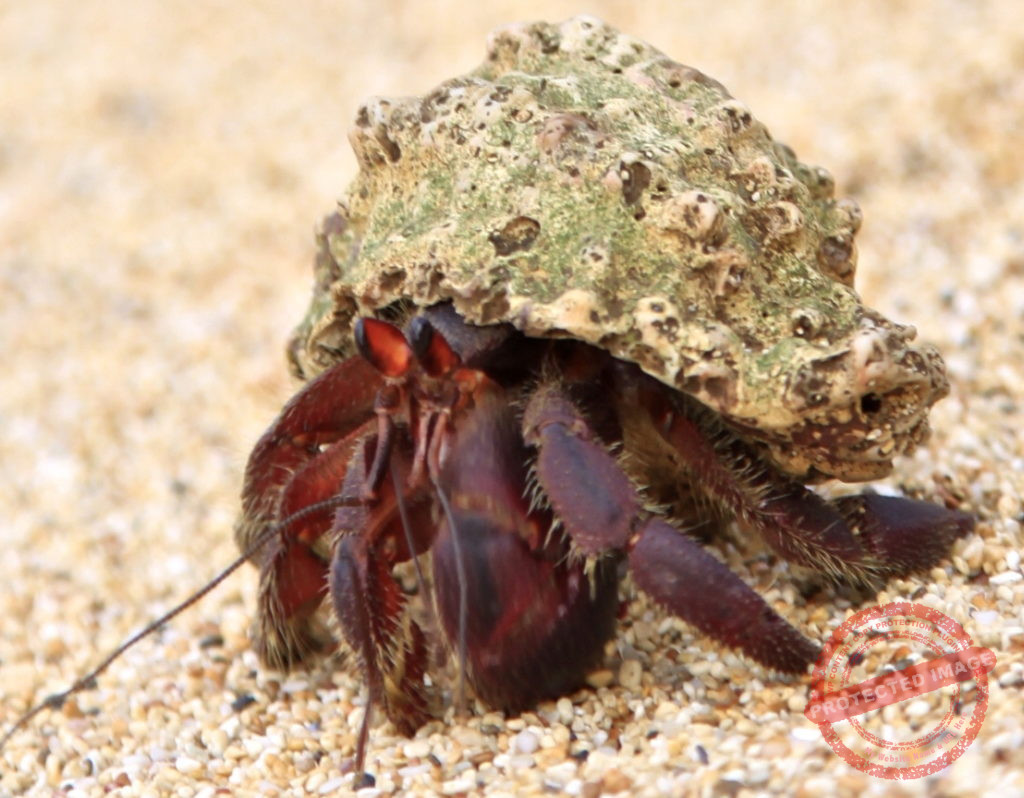

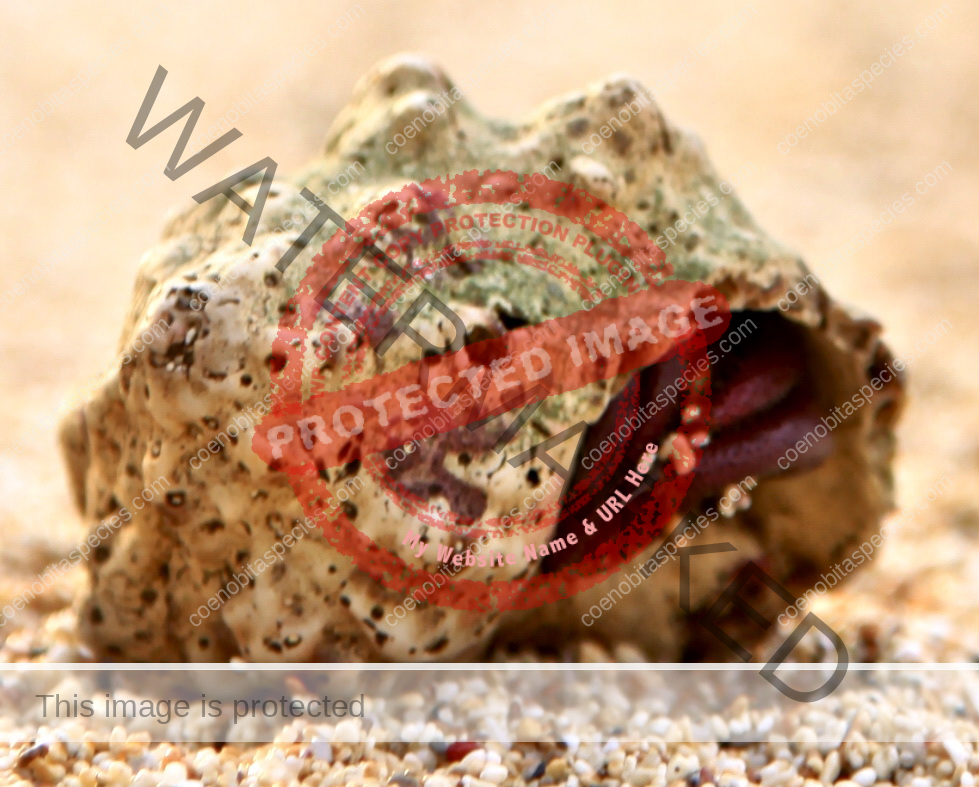
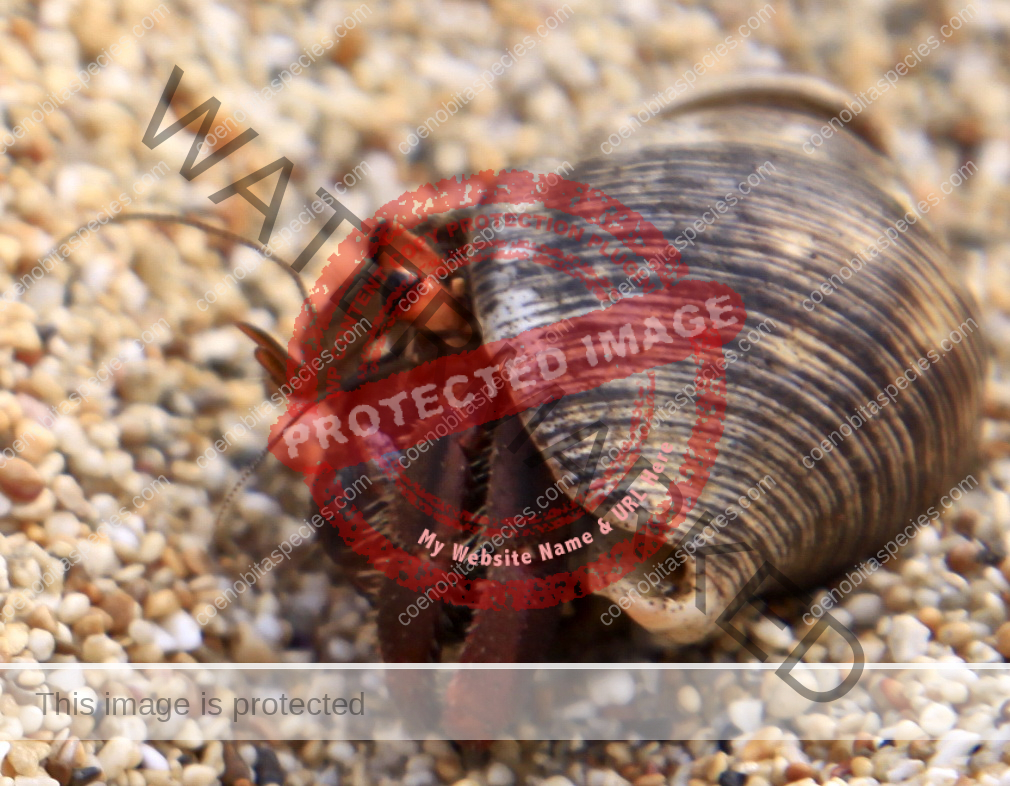
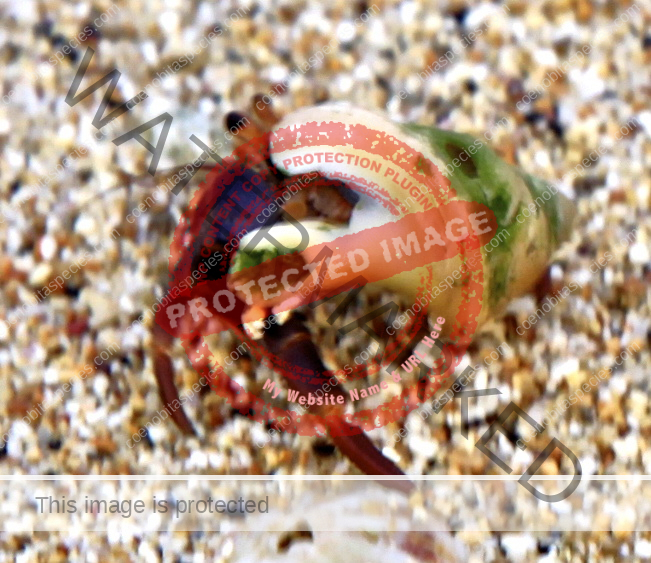
Photo Credits
- Anita Yantz
- Marat Assanov
- Richard Bowen
- Guy Colborne
- Chuck Moravec
- Zuzana Sedlackova
References
Biology of the Land Crabs By Warren W. Burggren, Brian Robert McMahon
Translation is not great on this article but here it is…
TERRESTRIAL CRUSTACEANS Of the crustaceans, of which the Dr. Greeff was the first one to give the news, six species lives in the rivers of the island. Intermedia Atya, scabra, Palemon Olfersii, Potamon margaritaceus, margaritacea Thelphusa, Actaea rufopunctata lives in the rivers of the island the great altitudes. The Potamon margaritaceus, still meets in the river of Mello in the altitude of 300 meters and in the Homesickness the 700 meters. It is perhaps to
this species that if a poet related unknown, little become attached the S. Tomé, when it wrote Cursed land Where if it fishes shrimp in the mountain range. Four species are perfectly terrestrial, Gegarcinus lagostoma, Cardisoma armatuum and two species of Armadillo. The Dr. Greeff still cites as terrestrial the Caenobita rugosus, or before the C. rubescens, according to Mr. Bouvier, who examined 19 units harvested for Mr. Gravier. The Dr. Greeff found êste crustacean in roça Mount Coffee in the altitude of 800 meters. This Caenobita uses to advantage of shells variadíssimas for nelas if to lodge. The case is cited to have been joined one put in one caroço of Andim palm. Dous terrestrial crustaceans, Gegarcinus and Cardisoma open long the deep galleries in which not far inhabit of the sea, invading the plantations, causing not small damages. The way of walking is curious and the easiness with that if they escape, when they alguêm tries to apanhar them. Mr. Gravier, who had good occasion to observe gives them of them the following description (5): The terrestrial crabs of the family of the Gegarcinidae (Cardisoma armatum, Gegarcinus lagostoma), which during periodo of evolution present curious polimorfismo, are numerous in S. Tomé as in all the hot regions of dous hemispheres. In pertaining lands to the Public works, in the capital of the island, they are moved away from the coast, to many hundreds of meters, arriving at the gardens of the Administration, there in which if they make assays of acIimatação of some essences and mainly of Eucaliptos, causing comparable damages to that in our countries they cause the moles. The number of them increases to the step that diminue in the distance to the sea, and in the neighborhoods dêste the land completely is riddled by the galleries, that they open. It is spectacle private property to observe of morning under the hot sun of this equatorial island êstes crustaceans in the neighborhoods of its underground habitations to walk in well special way fast e with the placed body seeming on some you walk formed for the long legs, that touch in the land only with the extremity of artículo terminal. Seeing them of far, to dir itself hia that they are small birds saltitando on the land. The alive côres, dominating the blue one, the yellow and the red made to remember me the shining côres of some birds, that I had seen in eastern Africa in the high planuras of the Harrar. “They are conserved not far of its hole always in comment and in it they enter immediately soon that any racket is produced, when, for example, they alguêm if it approaches to them with the biggest precautions. Since that they are taken refuge in its hiding place in consequência of any striking again, they do not leave new senão with extreme circunspecção and are conserved, for some time to the level of the orifice as to explore horisonte and to see if all the danger will have passed. For times I tried surpreendê-Ios before êles entered
for its dwelling, but em.vão; the aboriginal youngsters, more agile of the one than I, tambêm did not obtain it. “It was in the neighborhoods of the delicious bay of the Ribeira Fish, in the coast This of the island that I harvested the units that studied Mr. And L. Bouvier. Under the coconut palms that if find in this so colorful bay the Cenobitas (Caenobita rubescens) lives in great number in company of the Gegarcinos. These penetrate exactly in the plantations of cacoeiros that cover the next lands, that if raise brusquely very close to the coast and there they open galleries whose diameter is of 10 centimeters and exactly more until the a depth of a meter or more. These galleries do not teem definitive orientation and for times they are leagued enters itself… If of day it is inutil to think about wanting to apanhar some animal dêstes it are of its habitation, in which fast are collected, of noute is this easy one placing on the land a lantern. One sees then the carangueijos to be come close to the light with curiosity, and easily they can be apanhados “.